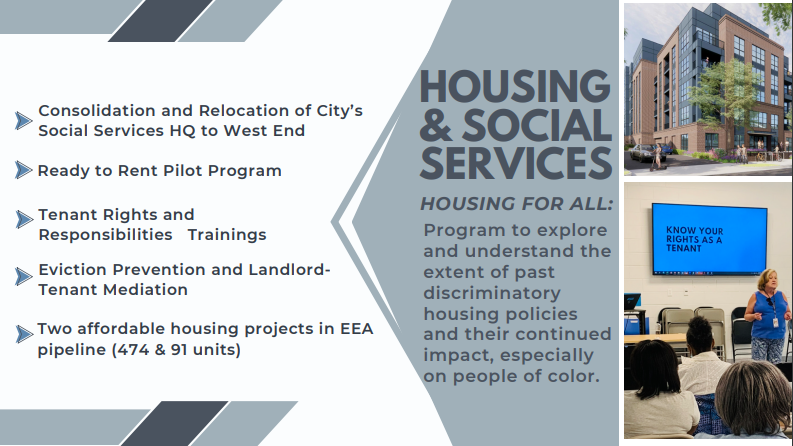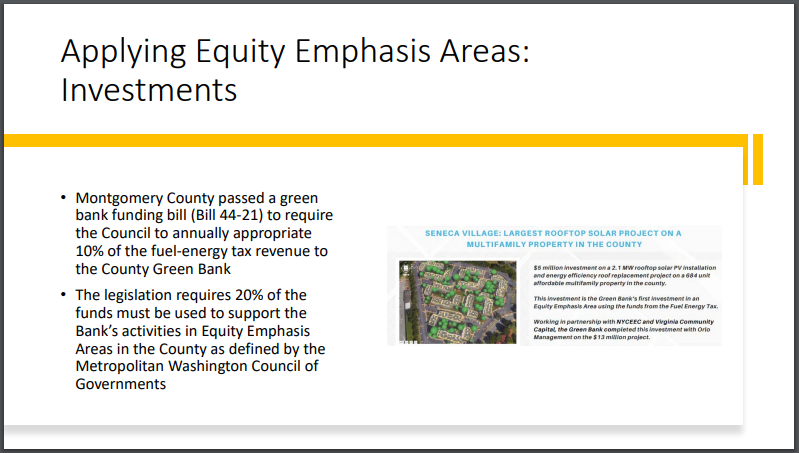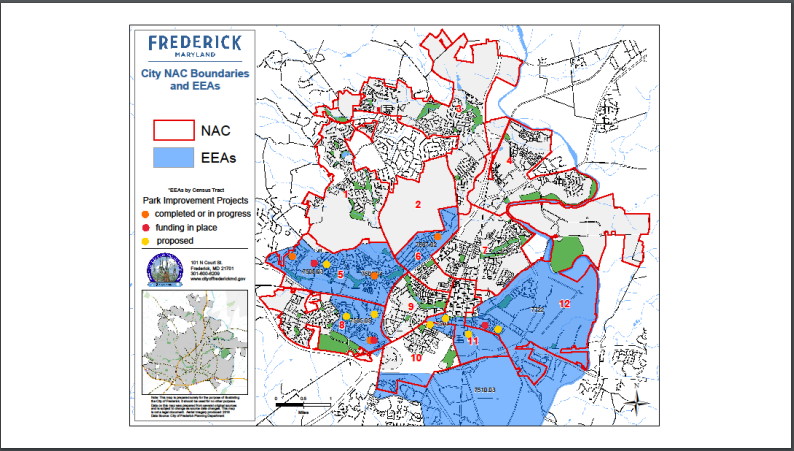At its March meeting, the COG Board of Directors was briefed by three fellow board members on how their respective jurisdictions are using COG’s Equity Emphasis Areas (EEAs) planning concept in meaningful and transformative ways to advance equity.
EEAs are 364 of the region’s more than 1,300 census tracts with high concentrations of traditionally underserved communities, such as low-income individuals and/or traditionally disadvantaged racial and ethnic population groups. EEAs were originally developed by the Transportation Planning Board at COG to analyze potential impacts of its long-range transportation plan but are now being applied more broadly across disciplines since they were endorsed by the COG Board in 2021. They are also a key concept in Region United, COG's planning framework for 2030.
“The populations in these areas have traditionally been underserved in transportation, in their housing needs, economic opportunities, and generally in their mobility,” COG Deputy Executive Director for Metropolitan Planning Kanti Srikanth shared in a brief historical overview of the tool.
City of Alexandria Mayor Justin Wilson, City of Frederick Mayor Michael O’Connor, and Montgomery County Council President Evan Glass each shared examples of how EEAs have been informing local decision-making.
Informing action on housing and transit in the City of Alexandria
In his presentation to the board, Mayor Wilson shared how EEAs revealed inefficiencies in the city’s social services and offered a roadmap to making a greater impact on the communities they serve.
Upon reviewing the EEA maps and incorporating equity into the operational decision-making process, it became clear to the city that critical social services facilities had not been placed in close proximity to many residents in need.
“We have a ring of EEAs along the I-395 corridor, and that’s where most of our residents receiving services reside, but our facilities that have housed those services have been historically on the east side of the city. We just purchased a building to consolidate these services that is adjacent to these communities,” Wilson explained.

In addition, Wilson shared examples of how Equity Emphasis Areas helped guide updates to the city’s transportation master plan, the Alexandria Mobility Plan, such as roadway safety and transit service improvements. He also noted that for the first time, Alexandria’s most recent capital improvement program has an equity component, informed by EEAs, as part of the budget decision-making process.
Greater understanding drives policy, investment decisions in Montgomery County
Montgomery County Council President Evan Glass shared how understanding the needs of residents living within EEAs has been a vital component in developing policy decisions, pointing to the county’s “Shovel Our Sidewalks Act”, which requires the county’s Department of Transportation to clear sidewalks within the Equity Emphasis Areas with the greatest dependency on transit.
“It is in the Equity Emphasis Areas where there is less car ownership, more dependency on transit, pedestrian infrastructure. People are literally and physically walking the walk, they’re sometimes physically stranded trying to access basic needs,” he explained.

EEAs are also driving investment decisions in Montgomery County. Last year, the Council passed legislation requiring 20 percent of the county’s Green Bank investments, which provides flexible financing options for county residents and businesses for clean energy and climate-resilient projects, be distributed within EEAs. The bank recently announced it would be financing a rooftop solar array at the Seneca Village affordable housing project, which will be the largest multifamily solar rooftop project in the county.
“This can and should be applied to so many other aspects of policy making, and to the budget as well,” concluded Glass.
Increasing recreational opportunities in the City of Frederick
City of Frederick Mayor Michael O’Connor said that following the murder of George Floyd, the city adopted equity as a fundamental value, applying an equity lens to every decision by the city.
When the city later launched a park master planning process, this commitment to equity, coupled with the use of EEAs, transformed where and how park improvements took place.
“What we needed to make sure we were doing, was not putting all our time and attention into parks that already get that, and put our time and attention into smaller parks,” shared O’Connor.
Nearly all of the projects included in the city’s capital improvements program were within EEAs.
O’Connor explained that with equity as a consideration, an array of opportunities arose for potential park improvements, going beyond revitalizing playgrounds and courts.
“It’s also improving the shared use path to really create better opportunities for residents who want to use that network for recreation and frankly as economic development opportunities. They may be the best way for the surrounding community to access shopping, jobs, or cultural opportunities. Not everyone has access to a car.”

The speakers noted that the use of EEAs provided a metrics-based approach to planning, allowing for greater perspectives in decision making processes.
“The equity component is having us really prioritize, using data, how we should take on projects. It can’t just be the loudest voices in the most affluent communities, we can point to a document with metrics,” explained O’Connor.
In the discussion that followed, board members expressed the desire to find new ways to communicate with the public about the benefits of including equity in planning and build widespread buy-in.
Wilson offered that it is essential to demonstrate “the connection of how looking at the policy answers through this lens helps us solve problems,” emphasizing the use of data to provide a clear picture of the disparities within a community, and demonstrate the concrete goals and priorities that these actions aim to achieve.
COG Board Chair Kate Stewart noted that members of the Chief Equity Officers Committee will be coming to a future board meeting, providing additional insight into the use of equity as the region’s leaders work to build a region where everyone can live and thrive.
MORE: Equity Emphasis Areas interactive map